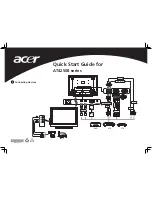
Note: TransCore recommends that basic protocol (not ECP) be used when commands are entered
manually at the keyboard.
Wiegand output is automatically disabled when the reader is put into ECP mode.
Error correction is accomplished with the use of a cyclic redundancy check (CRC) value that is based on
the message data. The originator (reader or host) calculates the CRC value of a message and includes it in
the transmitted message.
The recipient (reader or host) also calculates a CRC value for the received message. If the transmitted
message data is correct, the CRC value calculated by the recipient will agree with the CRC value
calculated by the originator. If the CRC values do not agree, the recipient rejects the message.
Message sequence numbers are also included when using ECP. These sequence numbers are checked
to determine if the message received has the correct sequence number; if not, the recipient rejects the
message.
Since the seven-bit ASCII code is used and there are eight data bits per character, the eighth bit can
optionally be used to support parity. Where parity is selected, the CRC value calculation includes the parity
of each character in the calculation of the CRC value.
Parity is required to achieve the most reliable communications. If parity is enabled, both the AI1422E
Reader and the host must issue a message if any received character has a parity error. However, the
message must not be transmitted before receipt of the eom character. In this case, the AI1422E Reader will
issue an
!Error
message, and the host computer will issue a negative acknowledgment message.
AI1422E Reader User Guide
TransCore Proprietary
5–20
















































